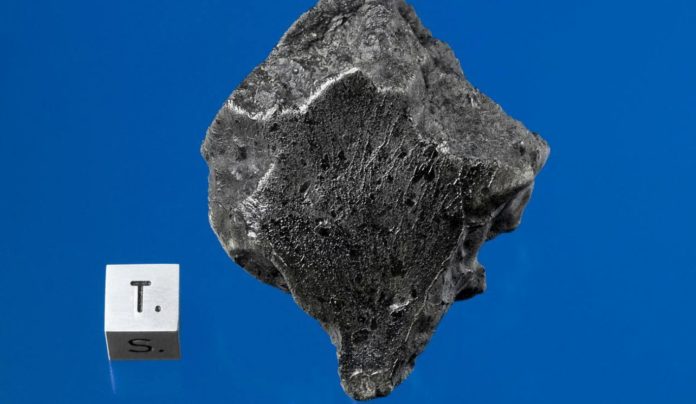A new analysis of an ancient meteorite challenges conventional thinking about how stony planets like the Earth and Mars acquire volatile components like hydrogen, carbon, oxygen, nitrogen, and noble gases as they form. The study was published in Science today.
According to Sandrine Péron, a postdoctoral scholar working with Professor Sujoy Mukhopadhyay in the Department of Earth and Planetary Sciences at the University of California, Davis, a fundamental assumption about planet formation is that planets collect volatiles from the nebula surrounding a young star.
At this point, the Earth is a ball of molten rock, so these elements first dissolve in the magma ocean and then release gases back into the atmosphere. Later, when chondritic meteorites hit the young planet, they bring more volatile substances.
In other words, scientists believe that the volatile components in the interior of the planet should mirror the composition of the solar nebula, or be a mixture of solar and meteoritic volatiles, whereas the volatiles in the atmosphere should come primarily from meteorites. The ratios of noble gas isotopes, particularly krypton, can identify these two sources — solar vs. chondritic.
Mars is particularly interesting since it formed very swiftly after the beginning of the Solar System, taking just approximately 4 million years to solidify compared to the Earth’s 50 to 100 million years.
“We can reconstruct the history of volatile delivery in the first few million years of the Solar System,” Péron added.
Mars meteorite
Mars is the source of some of the meteorites that crash into Earth. The majority come from surface rocks exposed to Mars’ atmosphere. The Chassigny meteorite, which landed in north-eastern France in 1815, is unique in that it is supposed to depict the planet’s innards.
By measuring minute levels of krypton isotopes in meteorite samples using a newly developed technique at the UC Davis Noble Gas Laboratory, the researchers were able to deduce the origin of the rock’s elements.
“Because of their low abundance, krypton isotopes are challenging to measure,” Péron explained.
Surprisingly, the krypton isotopes in the meteorite match those found in chondritic meteorites rather than those found in the solar nebula. That suggests meteorites delivered volatile materials to the forming planet more sooner than previously anticipated, and in the presence of the nebula, contradicting previous assumptions.
“The Martian interior composition for krypton is nearly purely chondritic,” Péron added, “but the atmosphere is solar.”
The findings suggest that Mars’ atmosphere could not have originated only from mantle outgassing, as this would have resulted in a chondritic composition. After the lava ocean cooled, the planet must have acquired an atmosphere from the solar nebula in order to prevent significant mixing between inner chondritic gases and atmospheric solar gases.
According to the latest findings, Mars’ development was completed before the solar nebula was dissipated by solar radiation. However, the irradiation should have blown off the nebular atmosphere on Mars, implying that atmospheric krypton was maintained in some way, perhaps underground or in the polar ice caps.
“However, that would require Mars to have been cold in the immediate aftermath of its accretion,” Mukhopadhyay explained.
“While our study clearly points to the chondritic gases in the Martian interior, it also raises some interesting questions about the origin and composition of Mars’ early atmosphere.”
Péron and Mukhopadhyay hope that their research will inspire more research on the subject.
Image Credit: UniversalToday
You were reading: New Discovery Casts Doubt On Planet Formation Theory
